
Since its launch in 2011, Skycoin has worked quietly for seven years, patiently driving the development of Skycoin. Skycoin did not hurry to go on the major blockchain exchanges, but intensified every step of the Skycoin ecosystem.
Value-driven and asset-backed, it has used technological innovation to promote Skycoin's credit, allowing credit-based value Internet to run safely, stably, and efficiently in the Skycoin ecosystem
After years of of continuous development and internal control testing, the flagship project of skycoin, Skywire, is ready to launch
Skywire is the new decentralized Internet, a wireless mesh network that pays for supporting it
Skywire is a peer-to-peer alternative network that takes control from ISPs and gives it back to the users. There are several components inside it - node manager, node and applications run on meshnet like vpn client, vpn server, socks client, socks server and so on.
Skywire will decentralize the Internet by motivating network nodes. In the future, by installing a mesh network antenna, you can get rid of the existing ISP infrastructure.

Skywire is based on the well-known open source networking project cjdns and OpenFlow protocols (also known as software-based networks).
It is said that Skywire's speed will greatly exceed any existing dedicated virtual networks and the Internet through channel binding and public/private key based DNS services.
The Objectives of Skywire are
• Increase broadband competition. Provide an alternative to existing ISPs. Span last mile.
• Enable communities to build ISPs running on user-operated infrastructure.
Skywire is a new darknet protocol.
• Low Latency (as fast as TCP/IP and theoretically faster on native network)
• High Performance (designed for video, file sharing and high throughput applications)
• Privacy Preserving
• Supports Operation Over Wi-Fi (Meshnet)
• Supports Clearnet Operation (Darknet/Overlay)
Skywire solves the incentive and leeching problem for network deployment
• Users receive Skycoins for providing network resources
• Users consume coins for consuming network resources
Skywire is open access.
• Anyone with a client is able to connect to any Skywire node
• Objective is to create a global open access meshnet
Skywire is privacy preserving.
• The traffic passing through your node cannot be traced back to your IP address
• Nodes forwarding traffic can only see the previous and next hop
• Third parties passively observing cannot link individual packets to a stream or user
• Third parties and forwarding nodes cannot read contents of traffic
To understand what is the nature of Skywire, we must first understand what ISP is.

ISP: The Internet Service Provider (ISP) is an Internet service provider. It provides dial-up services, online browsing, file downloads, and e-mail services. It is an entrance and bridge for Internet users to access the Internet.
With centralized systems like ISPs, we are all forced to trust other human beings to ‘do the right thing.’ But what if the right thing for them isn’t the right thing for you? Sure, we can hope that the people in power have integrity, but that isn’t always going to be the case. The most rational expectation to have of others is that they will act in their own best self-interest, as that’s what human beings do

Today, we rely completely on our ISPs to gain access to the internet, which works on aging protocols that are extremely vulnerable to snooping, and influenced by those with authority and money. In a time where our data and lives are increasingly online, the stakes of using Web 2.0 become increasingly risky.
From state-level political scheming to commercial abuse of user data, the internet has been become a potent tool for controlling the masses. Censorship is an equally worrying problem; opposition to net neutrality heralds a world where the government and service providers decide what and how we can do something on the internet. But rather than outright censor the Internet, censorship is being used against us to control our minds, a propagandistic tool that is both ideological and economical.
Recently Cambridge Analytica (CA) were involved with harvesting information on millions of Facebook profiles without user’s knowledge or consent. This information contained status updates, likes, profile content, their friend’s profile pages, etc. That information was then used to develop a propaganda message that would influence users’ perception to different political views. This is similar to micro targeting with various political messages so they vote for Trump for example or they believe Trump is a better candidate than others.

The company Cambridge Analytica may have possibly influenced more than 200 elections worldwide and there have been allegations that they may have also been involved with the Brexit campaign.
The power is squarely in the hand of service providers – not just ISPs, who control the information we can access and how much we pay for it, but the gateways of the internet that are Google, Facebook, Amazon and others
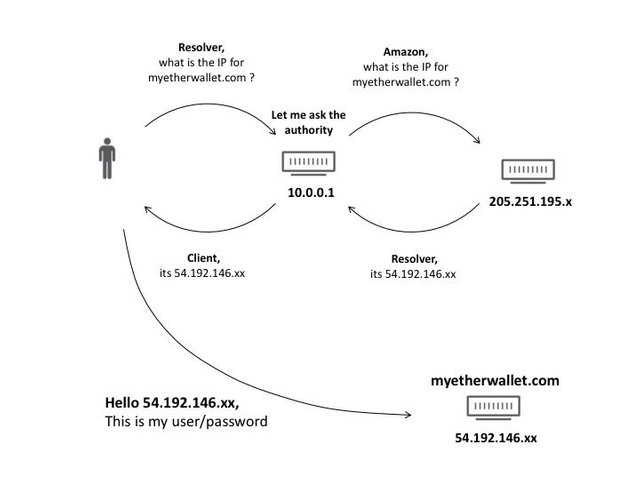
Skywire, which is the same kind of thing as ISP, is replacing the Skycoin ecosystem service provider that ISPs have created, creating a faster, more affordable, and more convenient incentive-type mesh network for Skycoin.
The mesh network is designed such that users pay, through Skywire’s currency Skycoin; for the amount of bandwidth they consume – nothing more, nothing less. The price will neither increase, as it does with traditional ISPs, nor will it be subject to a contractual period of any length. You pay based on how much bandwidth you need and consume.
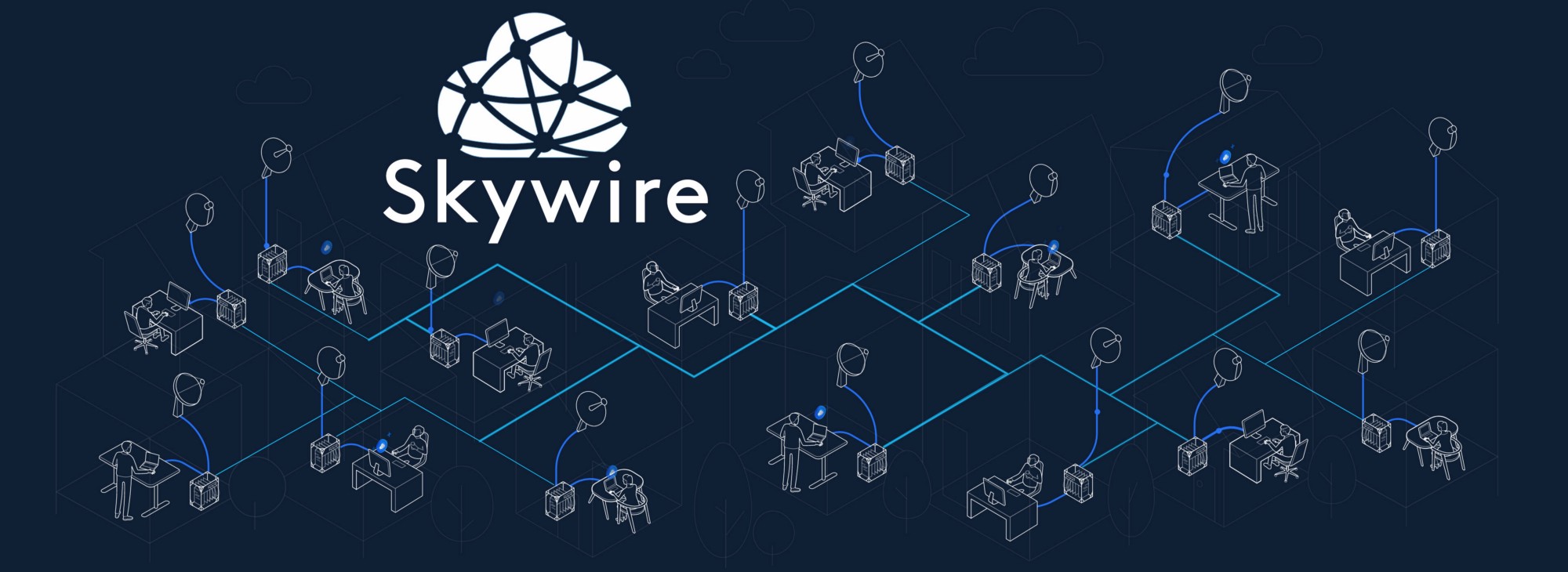
As opposed to this out-dated protocol, the Skywire project operates on what is called a “mesh network” – which is just another way of saying that Internet traffic, is routed through the users of the network. The mesh network is not a new idea, but previously lacked the economic incentive for sustained use. Blockchain technology answers that problem and gives users motivation to help build a new Internet.
The upshot of the mesh network is that there no central point of failure – should one node go down, the many other nodes still stand to support the internet.
Decentralized system like Skywire is designed so that every participant can act in their own best self-interest within the system without harming other participants. The corruption, greed and incompetence that pervade our ancient centralized systems simply don’t have as strong a place in decentralized ones
It is not necessary to trust anybody else to ‘do the right thing’ – this is called trustlessness. No individual has power or control over the system. This is what makes blockchain technology truly revolutionary
WHY SKYWIRE?

First, the ISP is a centralized service, that is, all people need to access the network through the ISP. It controls the entire network service. In case of any problems, the entire network will be affected.
In a mesh network constructed with Skywire, each user (node) can become an ISP and provide services for other nodes. It is a completely decentralized network system.
Skywire is more than just a meshnet. It is software defined networking, it is much more powerful than just meshnet. It’s a new type of networking and new completely new protocol and networking namespace, independent of the existing Internet.

It supports source routing, while the existing Internet does hot potato routing, so never achieves optimal latencies.
It supports multi-homing, which IPv6 does not (Which is critical for when we have gigabit or terabit networking and multi-redundant bandwidth paths)
It has default opportunistic crypto, both link layer and end-to-end; so everything is encrypted by default, unlike the current Internet.
It has store and forward networking and will operate in Africa or even under conditions where latencies are in the minutes or hours and packet loss is excessive. Where existing protocols cannot operate reliability. It is much more robust than IPv4/IPv6 or TCP/IP
It has improved privacy. If a packet takes a route that is 10 hops, each hop only knows the previous node in the route and the next node in the route. It is not like IPv4 where each packet gives the source and destination. The privacy level is something that does not exist on the current Internet.
IP addresses are replaced by public key and no one can read traffic to a destination, without knowing the private key of the public key that identifies the destination. The system does not need 3rd parties or certificate authorities. The design is a revolution.
Second, currently almost all Internet services use the TCP/IP communication protocol. There are two serious flaws:
One is that when the amount of data that needs to be transmitted in the network is too large, this protocol will delay the data transmission rate to reduce network transmission congestion, which may bring about delay or loss of information transmission.
Second, when a certain route data is congested, the data originally supposed to be transmitted through this route will be dropped to any other route. For example, originally, A has a message to pass to B, but because AB route is too crowded, it immediately passes to C, C may pass D after a few laps before returning to B, the efficiency is greatly reduced.
Skywire utilizes Multi-Protocol Label Switching (MPLS) to achieve scalability and performance. While current protocols run through a long chain of IPs before reaching its destination, the mesh network finds the optimal path to the destination, which increases speed while reducing network load.
In the Skywire mesh network, each node can provide bandwidth, can forward information, there is no data congestion, but also ensure that the data transmission always choose the most efficient and ideal line.
Third, Skywire adopted an innovative payment protocol and established a reward mechanism.
Since Skywire is provided by users (nodes) with bandwidth and storage space, more nodes can make the network performance more powerful, so Skywire rewards Skycoin and Coins according to the resources provided by each node, and has the power to provide more resources and improve the entire Network service quality.
HOW DOES SKYWIRE WORK
The work of the node is achieved through Skyminer.
Skyminer is hardware with computing power, network and storage capabilities. Based on the obelisk algorithm, traffic is forwarded and stored in the Skywire network, providing data transmission routing and implementing node accounting functions.
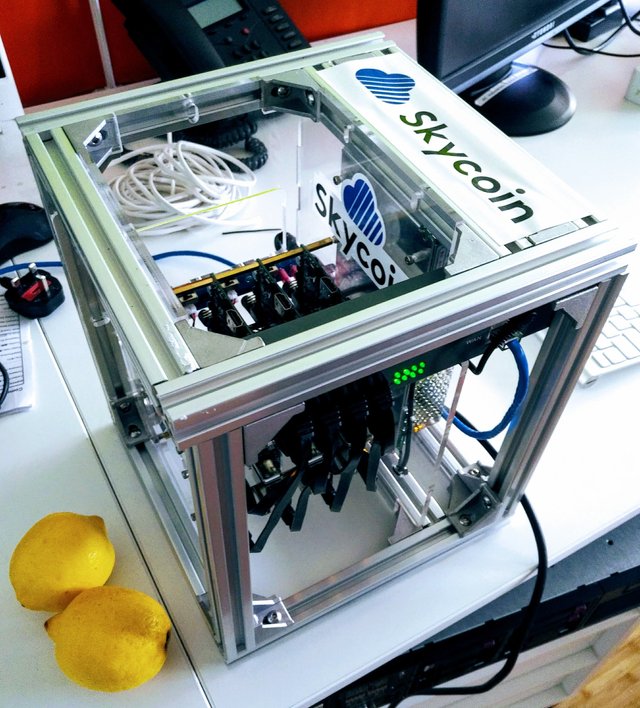
Skyminer specifications
The first generation of Skywire mining machine hardware configuration is as follows:
Custom PCB board
16-port OpenWRT router
16GB RAM (8 x 2GB DDR3)
ARM Cortex-A53 CPU
8 x 16GB Class-10 A1 Micro SD
Six-core Mali450 GPU
LAN bandwidth: 8 x 1000Mbps
Gigabit Ethernet, 8 + 1 Port Switch
64-bit Linux (Alpine Linux)
Basically it includes 8 Orange Pis, a router, Ethernet cable, and a power supply (total cost 600 USD). The use of cheap but efficient and easy-to-get hardware prevents issues such as ASIC computational concentration. At the same time, it also provides the hardware needed for unlimited horizontal scaling.
Interestingly, each Orange Pi will only act as a node for an application on Skywire. Segregating each application into its own blockchain will eliminate the systemic risk of the growing global blockchain.
Compared to Bitcoin's miner, Skyminer is not designed to compete for block package rights, but to encrypt, decrypt, transfer content, and transfer traffic. Eliminating a large amount of computation that has no practical value in order to compete for the package right, its hardware cost is lower and more efficient
The bitcoin mining machine is based on the POW algorithm, and carries a lot of calculations without actual value for accounting purposes. Skyminer's hardware costs are lower, the efficiency is higher, the selling price is lower, and the energy consumption for running is less.
Skyminer is also more convenient to use, and is currently developing "plug and play" capabilities designed to help unskilled users easily deploy their own nodes so that everyone can become a member of the decentralized network.
Because Skyminer provides bandwidth and storage space as physical resources, Skywire has more practical value.
In the future, Skywire will not only be used in the Skycoin ecosystem, but it will also replace ISPs to provide better services for the current Internet.
Skyminer is a small hardware device that is a working node in the Skywire mesh network. Skywire provides network services through Skyminer.
A Skyminer is similar in size to a small safe. The current specification has 8 boards, 64 boards, and 256 board boards with internal embedded computer chips that provide bandwidth, operation and storage .
It has only one power supply and can power multiple groups of devices, such as powering 24 computing nodes. Rather than having a single power supply for each computer, we only need one power supply to power dozens of nodes, reducing cost and complexity.
Assuming that you and the neighbour’s Skyminer have been connected via the antenna, you will be able to use the neighbour’s path as the bandwidth. For example, your network bandwidth is 100 megabits, and you have connected five neighbours. Each of them has a 100-megabit connection speed and your connection speed will reach 500 megabytes .
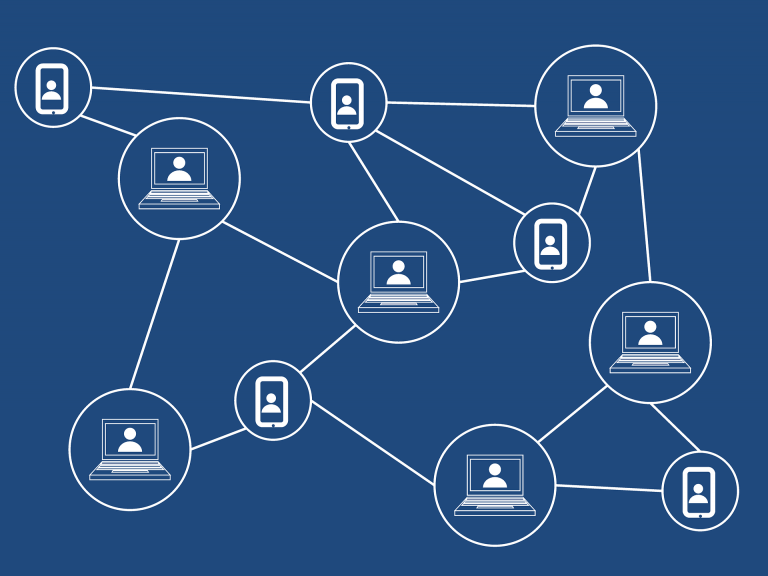
When the bandwidth, storage, or computing power of a Skyminer is not enough, another Skyminer's resources can be connected and used, and tokens can then be paid to it. Skyminers providing resources can obtain tokens, which form in the Skycoin ecosystem. A closed-loop economy.
Skyminer processes 100 megabits per second per chip .
Each chip is equivalent to a mobile phone processor, cost about 20 US dollars, you only need to configure the number of chips according to their needs, do not need to buy an expensive mineral machine like other blockchain platform.
Skycoin is producing antennas. Skyminer can access Ethernet and plug in the antennas. These antennas can be connected to other Skyminers in a peer-to-peer manner.
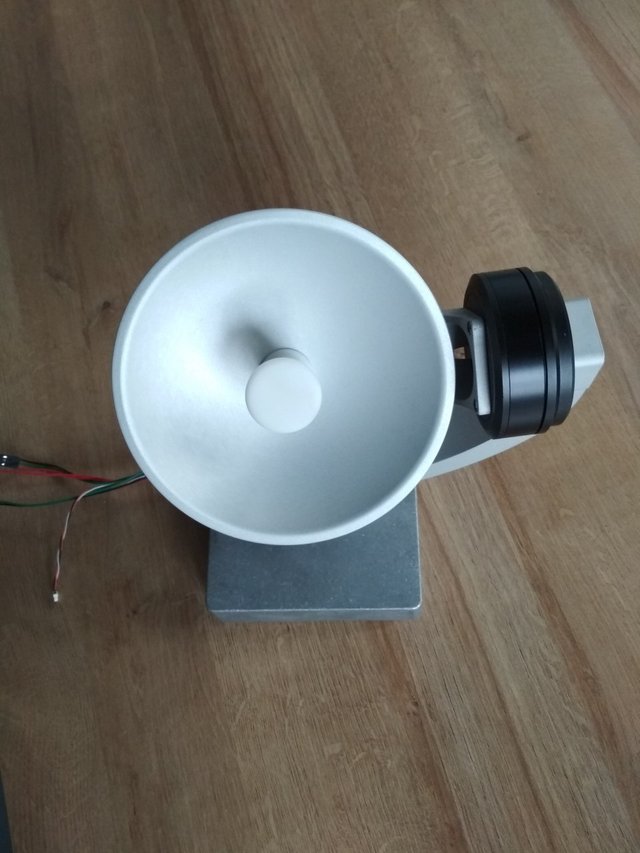
The number and function of Skyminer can be configured according to your needs, and it can be increased indefinitely. If you want more bandwidth, you only need to install more antennas; if you want more power, you only need to install more compute nodes; if you want more storage, you only Need to install more storage nodes.
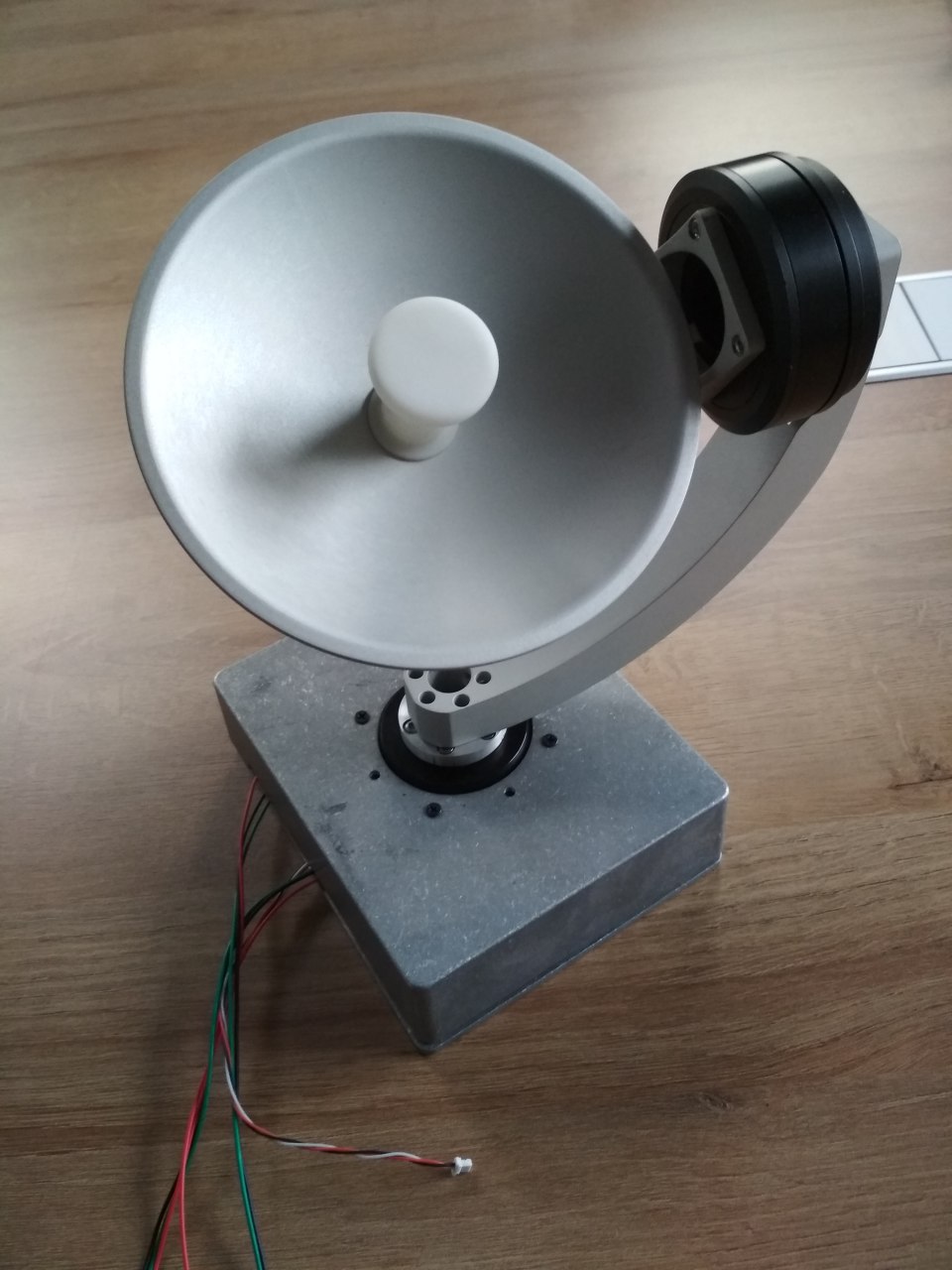
After you purchase Skyminer, you can start running as soon as you access the circuit board to register. It is plug and play .
Skyminer provides hardware support for enterprise and personal blockchain applications, while the CX programming language addresses software-level difficulties. After years of development iterations, we designed the CX programming language to easily implement blockchain application writing
This means that companies do not have to go out and hire a blockchain consultant and pay them exorbitant amount of money. No matter what the current scripting language is, companies can let their existing programmers train after four or five hours to write blockchain applications.
It is also possible to build a knowledge-sharing platform where people who provide learning materials can get tokens, and those who use learning materials pay tokens.
The way to achieve this is actually quite simple: purchase several Skyminers (you can even buy them, use tokens to use other people's resources), connect to Skywire plug-and-play, and apply your application via the easy-to-learn CX. Deploy it so that it builds its own blockchain application and begins operations
When you release a token on Skywire, you will also have a mobile wallet, a PC wallet, and a hardware wallet. You will have a blockchain application hardware platform that is your own.
If you want to use Skywire, you must first become a node on the network. The nodes that forward traffic will encrypt the traffic directly and they cannot know the final direction of the encrypted packet. You only know to connect your previous and next nodes.
At the same time, encrypting data packets will also prevent you from viewing the data. You will receive credit as a reward for forwarding packets. The file can only be unlocked and viewed by the requester's private key after reaching the target public key.

You can think of it as a peer-to-peer seed network where data is encrypted and can only be seen by the downloader. Providers, or providers of interconnected nodes, will be paid according to the provider's bandwidth.
With Skyminer basic hardware and Skywire distributed internetwork, in a user-driven, free and open-to-public blockchain ecosystem, all participants have the opportunity to work together to promote and reshape the entire the Internet
Skyminer has now entered 41 countries and regions, and they are almost all over the world. What Skycoin needs to do is to really move into millions of homes so that everyone can connect to Skycoin's network and develop more powerful Meshwork.
The skycoin foundation has assured its community that the DIY mining machine would all be approved as long as they can provide enough bandwidth to maintain enough online time. The computing power guarantees that the encryption and decryption will work stably during communication and everything will be accepted. Below shows the state of the skywire during internal testing
Their original intention of launching the Skycoin project was to solve some problems that Bitcoin and Ethereum appeared, such as PoW (Workload Proof Consensus Algorithm). The centralization, 51% attack and other drawbacks.
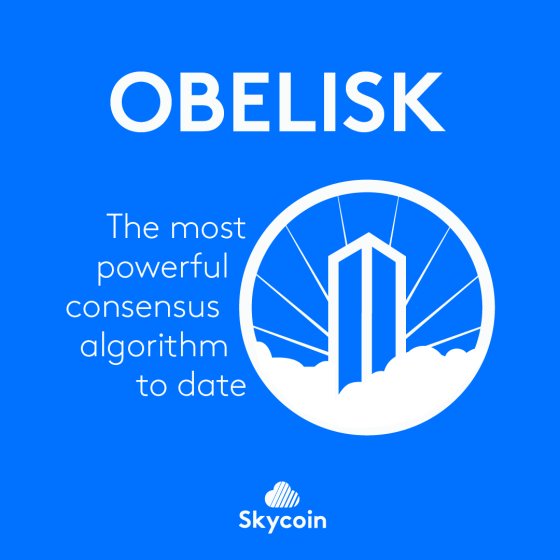
"After several years of continuous development and improvement, the Obelisk algorithm (trusted network consensus algorithm, literally translated as the 'Obelisk') has been proven to be the core and pillar of Skycoin's ecology. It has a revolutionary breakthrough in both concept and technology. ”
Obelisk algorithm abandoned mining and instead used “money time” to motivate users’ sharing behaviour, greatly saving computing resources; simplified the Byzantine general problem, created a public radio channel, and avoided consensus confirmation. The delay is too long; using intelligent nodes, it automatically identifies and cuts off connections to malicious nodes and prevents large-scale coordinated attacks by malicious nodes.
The Obelisk algorithm eradicates the “51% attack,” which is the most fatal flaw of the PoW algorithm.

COMPENSATION
Users are incentivized with the native cryptocurrency, Skycoin, to help support the network. A payment protocol is embedded into nodes, allowing them to meter, bill and settle payments for their part in running the network .
Skycoin is used to pay for bandwidth. Those who use bandwidth must spend their Skycoins to do so, and those who run nodes, which enable the traffic to be forwarded over the Internet, earn coins for doing so. This is Skywire’s counterpart to mining and will be the way that most early users will earn Skycoin. As mentioned, mesh networks require an economic incentive, fuel to keep the system going, and that’s exactly what Skycoin is.
Another payment mechanism is Coin Hours, which can be earned by holding Skycoins. Every address that holds a number of Skycoins for an hour earns an equivalent number of Coin Hours. Users can utilize their earned Coin Hours to pay for services on the Skycoin platform.
This system leads to a critical change that is probably not on the minds of many: your data will no longer be sold to third parties .

With Skyminer basic hardware and Skywire distributed internetwork, in a user-driven, free and open-to-public blockchain ecosystem, all participants have the opportunity to work together to promote and reshape the entire the Internet
Skywire is basically Internet network for the people and run by the people .
Already second-generation skyminers for skywire are already been produced
Ark and Bitseed co-founder Mike Doty will mass-produce the next generation of Skywire mining machines. This will ensure that there is enough hardware to develop the Fiber ecosystem.
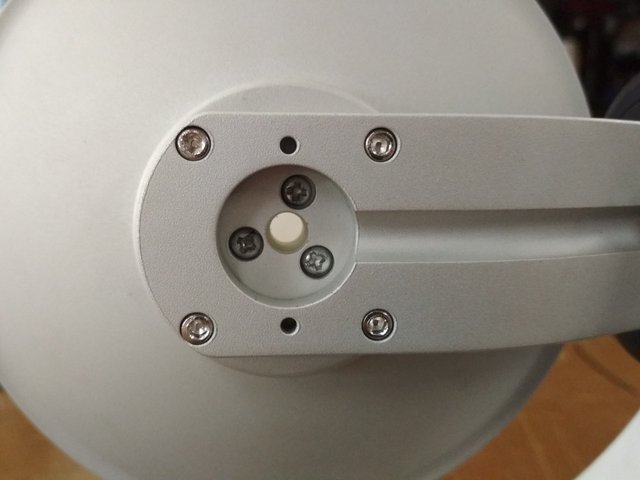
In addition solar powered skyminers are being produced for remote places like Africa and northern communities in Canada .
The wireless antenna mesh network will eliminate the need for existing Internet infrastructure. In the end, the Skywire miner will provide decentralized bandwidth, power, and storage on Skywire.
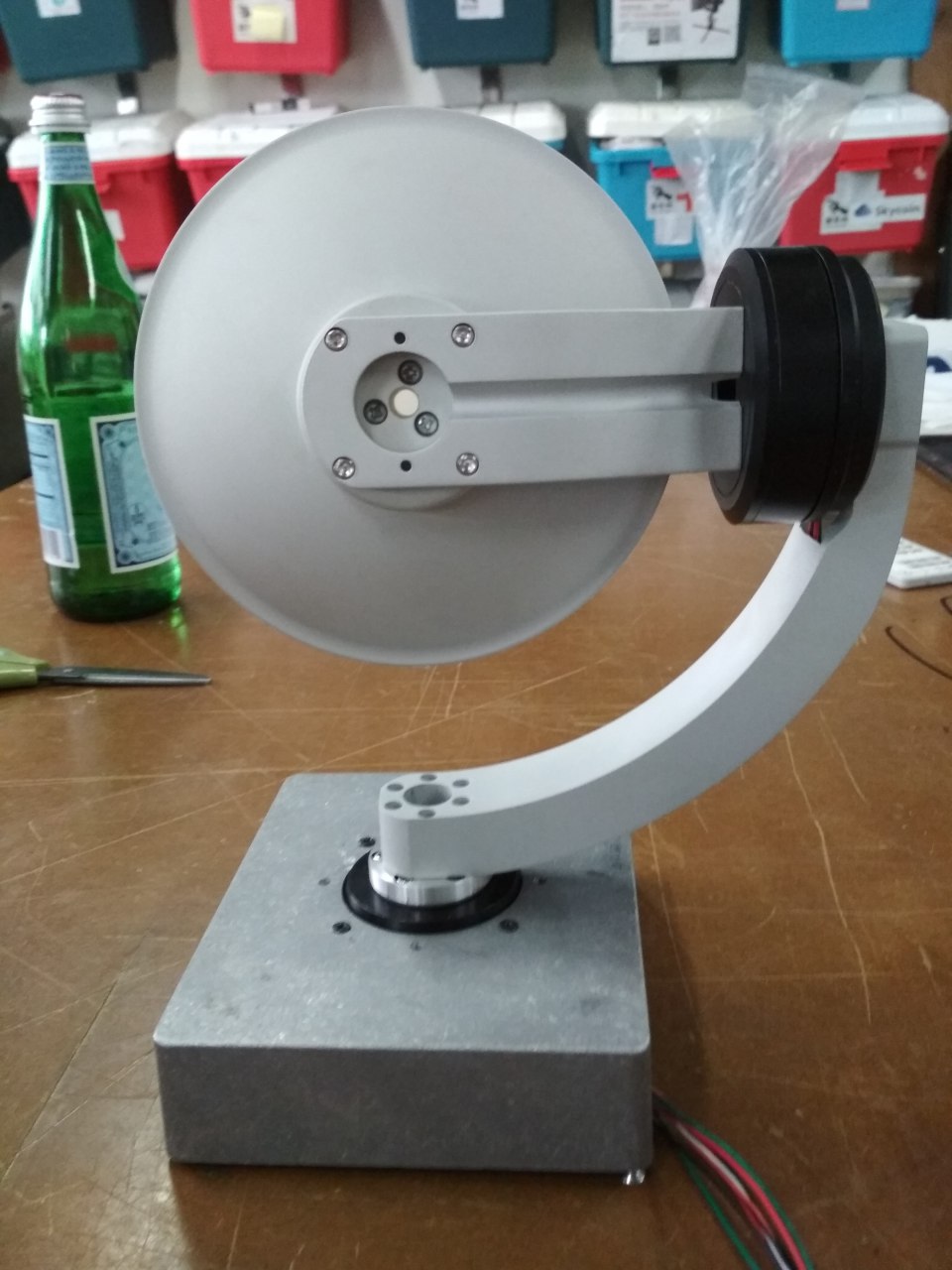
Skycoin has been working on a variety of mini-projects, including decentralized applications, a VPN, an encrypted messaging service, a BBS social media platform, cloud storage and a flagship video game.
The idea is to make the transition from the old web to the new as frictionless as possible — everything you use the internet for will be available on the new one immediately .
The team has also finished API integration work, bug fixes, testing, unit testing and integration testing .
There were API changes like
- Addition of wallet encryption
- API changes for cold wallet/offline wallet integration
- API additions for batched sends needed by a particular exchange
- API addition for send coins, controlling which outputs are being spent from
Basically, Skycoin is the most diversified project in the cryptospace
It consist of
- Banking (blockchain for payment settlement/clearing, financial services)
- Insurance industry
- Power grid companies
- Exchange services (blockchain for exchange services)
- Kitty cash (gaming on blockchain)
- Database/enterprise resource management systems (blockchain as database)
- Skywire (decentralized telecom utility sector)
Skycoin/skywire is one of the networking protocols that are candidate for bridging the disparate, separated national/regional Internets that are emerging. Which will allow corporations to conduct borderless business operations.
Holding one skycoin is what I would like to describe as a classical example of conglomerate discount .
Conglomerate discount is an economic concept describing a situation when the stock market values a diversified group of businesses and assets at less than the sum of its parts
The skycoin team is made up of
• Synth (founder), an early developer of Bitcoin, and member of several cryptocurrency advisory committees
• Huowu Chen (founder), an early Ethereum developer responsible for Ethereum's python implementation, Obelisk consensus developer
• Steve Leonard (founder), who has been involved in cryptocurrency since the early days of Bitcoin development. Developed most of the original Skycoin software
• Mike Doty (Counsellor), co-founder of Ark and Bitseed
• Michael Terpin (consultant), founder of the CoinAgenda series, head of the ICO committee of the Alphabit Foundation
• Patrik Dai (Investor), founder of Qtum, an early Vechain project participant
99% of crypto will disappear in a puff of smoke; the 1% that remains will change the world. Skycoin is in that 1 per cent
Mark your calendar for the 15th of May 2018 for a groundbreaking announcement
Remember it took bitcoin 7 years to get to $20,000; it’s been 7 years since this project started. I hope you see the handwriting on the wall
Currently, Skycoin can be purchased on Cryptopia, C2CX and KYC for listing for the biggest exchanges have been submitted
In addition, you can use the official website's OTC bypass feature to buy directly
https://www.skycoin.net/buy/
Find out more at https://www.skycoin.net
Facebook: https://www.facebook.com/skycoinproject
Twitter: https://www.twitter.com/skycoinproject
Reddit: https://reddit.com/r/Skycoin
Telegram: https://t.me/Skycoin
follows me at twitter https://twitter.com/bivins1
If you find the article interesting, please send your skycoin donation to
ELoYH9tHCQPi7ePsUc2v6ELkTa7vuPgC8b
Thanks excellent article - I've been a fan of Skycoin for a while but this helps explain it really well and I will forward it to some people I've told about the project.
Downvoting a post can decrease pending rewards and make it less visible. Common reasons:
Submit
thanks - excellent article
Downvoting a post can decrease pending rewards and make it less visible. Common reasons:
Submit